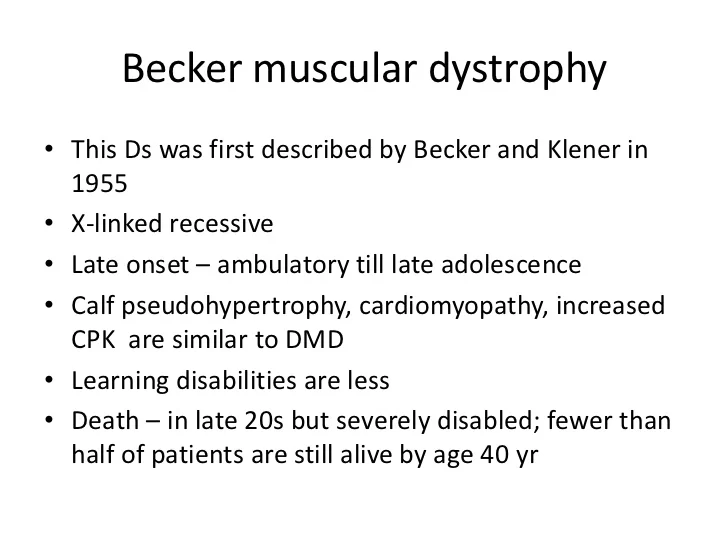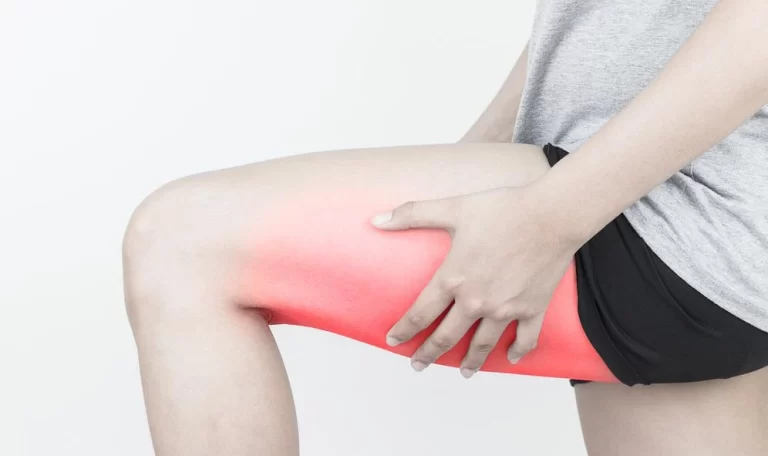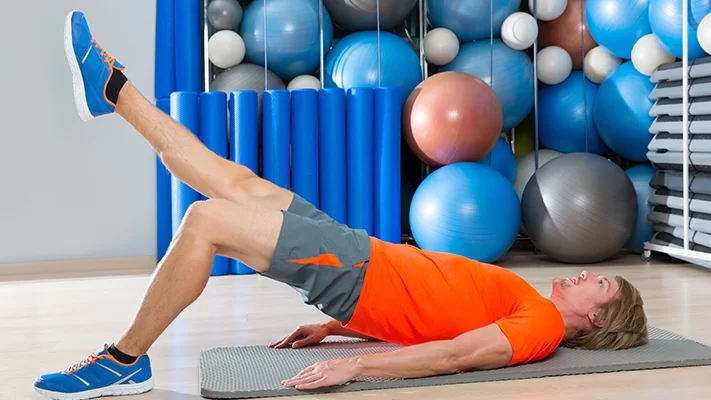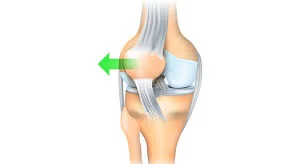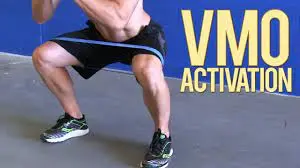11 Best Yoga Poses to Help with Asthma
Introduction
Yoga offers a holistic approach to asthma management by focusing on deep breathing, relaxation techniques, and gentle movements that help strengthen the respiratory system, reduce stress, and improve lung capacity. By incorporating specific yoga practices into their routine, individuals with asthma can experience improved control over their symptoms and potentially reduce the need for frequent medication usage.
What is for Asthma?
Asthma is a chronic lung disorder Trusted Source that affects the airways. During an asthma attack, the airways evolve narrowed and inflamed. The muscles surrounding them tighten and squeeze resulting in symptoms such as coughing, and chest tightness.
Asthma treatment usually involves bringing medicine, which soothes the muscles around the airways and decreases swelling and mucus.
A few research shows that yoga may be helpful as a complementary treatment for asthma. This implies that an individual would execute it in addition to an existing treatment plan, likely involving medicine.
Regardless, investigators reported that numerous of the analyses were flawed. Thus, scientists require to perform more useful studies to understand if and how yoga can support individuals with this disorder.
Sukhasana (Easy Pose)

Sukhasana, the easy cross-legged sitting pose, broadens the collarbones and chest. It concentrates entirely on breathing control and is, in fact, the best workout for the lungs. It utilizes the abdominal breathing method which is the foundation of all yoga asanas.
How to Do It: Begin with, seated, with your legs crossed. If you feel pain in your hips or lower back, move up a towel and place it under your sit bones for extra support. Bring your right hand and region it on your heart, position the left hand on your stomach, and close your eyes. Draw in the belly and lift the chest for correct posture. Let out your breath slowly and maintain the asana for 5 minutes, with slow, even breathing.
Nadi Shodhan Pranayama (Alternate Nostril Breathing Technique)
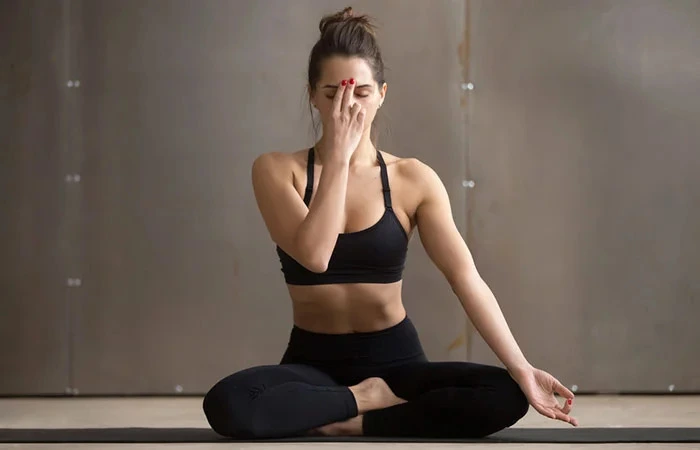
Even a few minutes of practicing this yoga asana for asthma patients is helpful. It involves inhaling from one nostril and exhaling via the other and replicating the movement by changing the sides. It is credited with purifying the blood of toxins and regulating the oxygen supply.
How to Do It: Sit down and relax in the Sukhasana pose (crossed legs) on the ground floor with your backbone upright and shoulders comfortable. Breathe in and out to create yourself comfortable in this position. Relaxes your left hand on your thigh in meditation posture (join the head of your thumb and index finger). Take your hand in Nasagra mudra.
After that close your correct nostril with the use of your thumb. Bring a beneath breath with your left nostril and then close it with your 3rd and 4th fingers. Remove your thumb to open your right nostril, then breathe out. Again inhale from your correct nostril, close it with your thumb, and exhale with your left nostril. Replicate these ten durations in the starting then you can boost the count.
Dandasana (Staff Pose)

Dandasana or the staff pose looks easy but is influential in alleviating the symptoms of asthma. This yoga pose helps by lengthening the chest and strengthening the core and muscles of the back. Breathing in this yoga pose is problematic which thereby helps strengthen the lung muscles.
Seat with your legs together and lengthened out in front of you. Turn your feet and extend out via the heels. Draw your lower abdomen in and up. Slide your shoulder blades back and down along your backbone. Take your chin slightly back and down and maintain the base of your neck smooth.
Upavistha Konasana (Seated Wide Angle Pose)
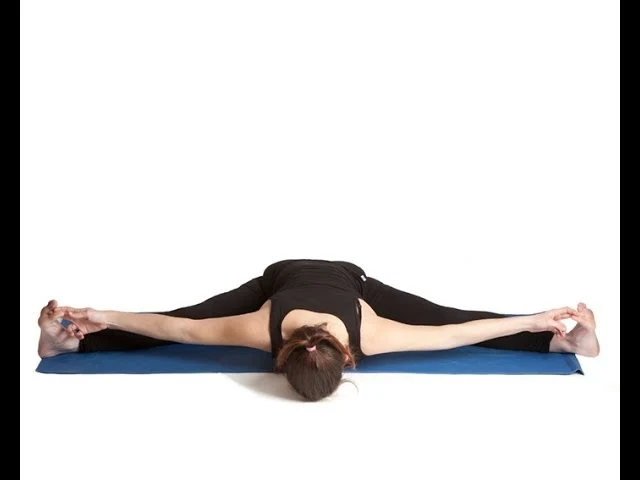
This yoga pose requires hinging from the hip with the legs wide open, lengthening the upper body while completely prolonging the chest and back. Breathing while holding this asana helps in enhancing lung functioning.
How to Do It: Seat on the ground floor with legs extended out in the facade. Utilize a blanket, bolster, or block for extra lift in the backbone if required. Exhale and extend the legs broadly. Draw the thigh muscles up. Exhale and stretch forwards from the pelvis. Arrive via the crown of your head towards your feet.
Uttanasana (Forward Bend Pose)
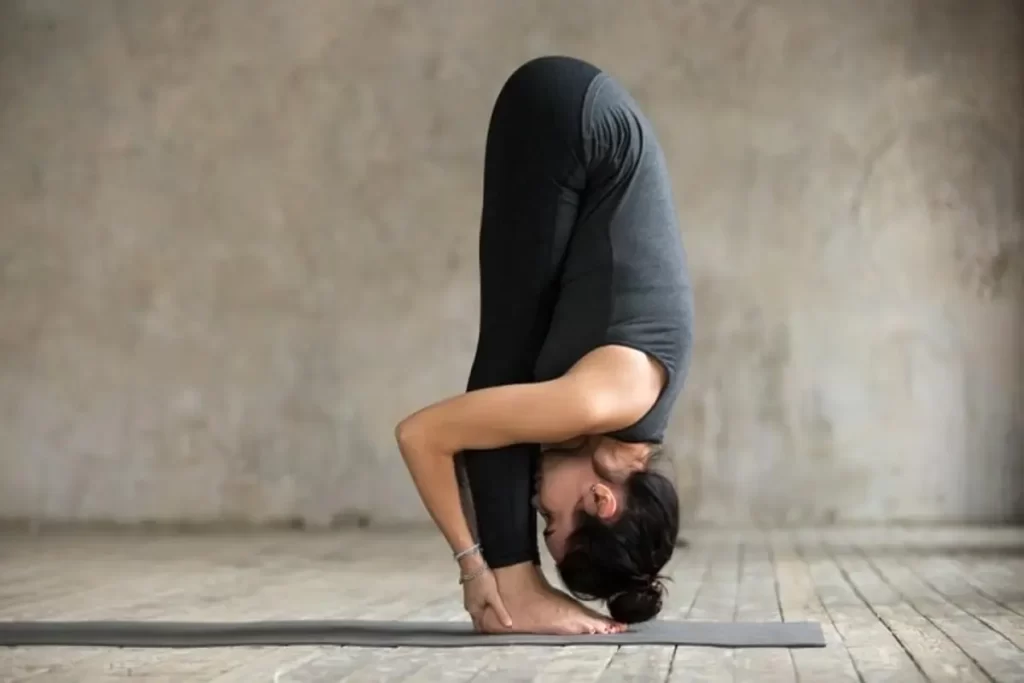
This yoga asana virtually lengthens the muscles of the hamstring and the abdomen and requires turning from the hip. At this point your body switches from sympathetic to the parasympathetic nervous system, helping your rest. It even supports opening up the lungs and supports in alleviating the symptoms of asthma.
How to Do It: Upright with your legs hip-width apart, fold your body forward, and put a small turn in the knees to reduce any strain, tension, and anxiety in the lower back. Fold your arms, maintaining each elbow together with the opposite hand, and let your body hang as you bring 5 breaths with your eyes closed.
Setu Bandhasana (Bridge Pose)

This is a backward bend asana that gives an in-depth stretch in the neck, the throat, the chest, and the lungs. In the last bridge pose, maintain this place for a few breaths. During inhalation, let the chest extend up and fill the stomach with air. The abdomen shrinks and the chest contracts during exhalation.
How to Do It: Start by laying on your back and turning your knees. Plant the heels of the feet on the ground floor deep to the knees. Extend the arms down alongside the body. Press into the feet, engage the core muscles, and lift the hips. pull the shoulders back, planting the shoulder blades into the mat or carpet. Bring a beneath breath and lower back down.
Bhujangasana (Cobra Pose)

Bhujangasana or the Cobra pose is excellent for reducing lower back pain, boosting energy and overall mood. It is one of the most suitable yoga asanas for asthma patients as it delivers a good expansion in the chest and throat and facilitates relaxed breathing.
How to Do It: Lie on your front on your mat with your feet pointed after you and position your hands on either side, palms down on the ground floor, right beneath your shoulders. As you start to lift up, slide your elbows under your shoulders and arrive your fingers forward; press your shoulders down as you hold in sphinx posture. If you wish to go further, slowly straighten your arms as you lift your chest up further off the ground floor. Breathe in and out as you look in front of you, maintaining your chin similar to the ground floor with a long backbone.
Kapal Bhati
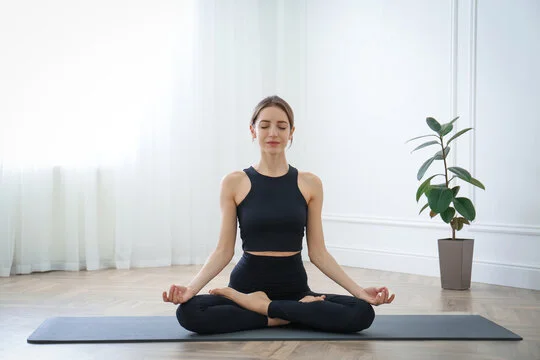
This breathing method soothes the senses and energizes the nervous system. It even clears all the nadis (energy channels) and enhances blood circulation.
How to Do It: Seat comfortably with your spine upright. Bring an in-depth breath in. As you exhale, pull your navel back towards the backbone. As you relax the navel and stomach, the breath flows into your lungs automatically. Bring 20 such breaths to complete one round of Kapal Bhati.
Adho Mukha Svanasana (Downward-Facing Dog Pose)

This asana calms the mentality and reduces stress, and anxiety, and is suitable for individuals suffering from asthma and sinusitis.
How to Do It: Reach onto your hands and knees and get your hands slightly in a facade of your shoulders. Distribute your fingers broad, push down through your knuckles, and tuck your toes under. Exhale as you lift your knees off the mat or carpet and reach your sit bones toward the ceiling. Maintain your knees slightly bent as you prolong your back.
Poorvottanasana (Upward Plank Pose)
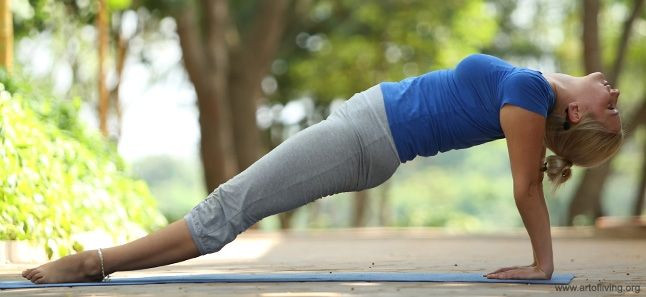
Upward Plank Pose The Upward Plank Pose enhances the respiratory system facilitates the thyroid gland, and also strengthens wrists, arms, and spine.
How to Do It: Begin with, lie on your back on your yoga mat with your legs together. Now fold your hands at the elbows and set your palms on either side of your shoulders, with the fingers pointing in the opposite direction as your hands. Now, exhale and rise off the ground floor utilizing your hands, and maintain your heels on the ground floor. Breathe usually in this posture. To return to your original position exhale and relax your buttocks on the mat.
Shavasana (Corpse Pose)
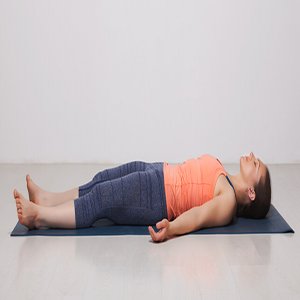
Complete your yoga practice by lying down for a few minutes in the Shavasana (Corpse Pose). This yoga asana brings the body to a meditative state, rejuvenates you, and even supports decrease anxiety and pressure. A calm and comfortable body and mindset are of the essence to tackle asthma.
How to Do It: Shavasana functions on the back with the legs distributed as broad as the yoga mat or carpet and arms comforted to both sides of the body, and the eyes closed. The full body is comfortable on the ground floor with an awareness of the chest and tummy increasing and falling with each breath.
Adding yoga to an asthma treatment plan
An asthma treatment plan, sometimes named an asthma action plan, is a tailored guide that can support individuals in virtually managing their asthma. A physician devises this plan and personalizes it to an individual’s requirements.
It can include things to avoid, which medications to get, and what to do in case of an asthma attack.
Although medication is a vital part of an asthma treatment plan, a healthcare specialist may even comprise nondrug therapies, which can include home remedies, yoga poses, and more additional.
Adding daily yoga poses practice to an asthma treatment plan strengthens the muscles, improves flexibility, and makes a connection between the body and breath.
Regardless, it is crucial to note that this activity is not a medically proven therapy for asthma and can’t reduce acute symptoms. With this in intellect, an individual experiencing worsening asthma symptoms should consult their asthma action plan.
Health benefits of yoga
In addition to supporting individuals with asthma, yoga poses offer diverse physical and cognitive benefits.
Physical benefits
- Weight reduction
- Increased flexibility
- Protection from injury
- Improved athletic performance
- Maintaining a balanced metabolism
- Increased muscle tone and strength
- Improving cardio and circulatory health
- Enhancing energy, respiration, and vitality
Mental benefits
- Relaxes the mind
- Stress management
- Sharpens concentration
- Increases body awareness
- Mental clarity and calmness
Precaution
Ensure that when you inhale via your left nose, your right nostril feels equally pressured. Breathe deeply as you inhale.
It’s important to note that while yoga can be helpful for managing asthma symptoms, it should not replace medical treatment. Consult with your healthcare provider before starting any new exercise regimen, especially if you have asthma or any other medical condition. Additionally, working with a qualified yoga instructor can ensure you’re performing the poses correctly and safely.
Conclusion
In conclusion, practicing yoga can be a beneficial addition to an asthma management routine. Certain yoga poses can help improve breathing, increase lung capacity, and promote relaxation. However, it is crucial to remember that yoga should not replace medical treatment for asthma.
Always consult with your healthcare provider before starting any new exercise regimen, especially if you have asthma or any other medical condition. Additionally, working with a qualified yoga instructor can ensure that you are performing the poses correctly and safely. By combining yoga with proper medical care, you can enhance your overall well-being and potentially alleviate some asthma symptoms.
FAQs
1. What type of yoga is best for asthma?
Sukasana. Only like savasana, says Dodge, Sukasana is another relaxing yoga pose and its concentration on breath and anxiety control creates it a great activity to support asthma.
2. Can Kapalbhati reduce asthma?
Pranayama (Breathing Exercises): Pranayama is a set of breathing exercises that can help reduce stress levels and enhance lung function. One influential pranayama for asthma is the Kapalbhati breath, which involves rapid exhales through the nose while maintaining the inhales slow and in-depth.
3. Can asthma be cured permanently?
Asthma is a disorder that impacts the lungs by infuriating the airways that carry the atmosphere in and out of your lungs. It is often a response of one’s immune system against foreign substances present in the lungs which could range from allergens in the surrounding atmosphere to viral conditions that one contracts in the earlier steps of life when the immune system isn’t whole expanded. In a few cases, individuals are even genetically predisposed to have asthma. Multiple such elements create asthma a disorder that cannot be cured permanently. Regardless, it can be managed to a moment where it evolves negligible. Daily practicing yoga supports in handling the symptoms.
4. Is Anulom Vilom good for asthma?
Ensure that when you inhale via your left nose, your right nostril feels equally pressured. Breathe deeply as you inhale. Himalayan Siddhaa Akshar extrapolated, “These four pranayama breathing approaches Basthrika, and Kapal Bhati—will be helpful to you.
5. Can meditation reduce asthma?
One path that meditation may decrease our vulnerability to diseases such as asthma is by supporting resetting our regulatory set-points and returning the mind-body to homeostasis or balance after we’ve experienced an anxiety reaction.


